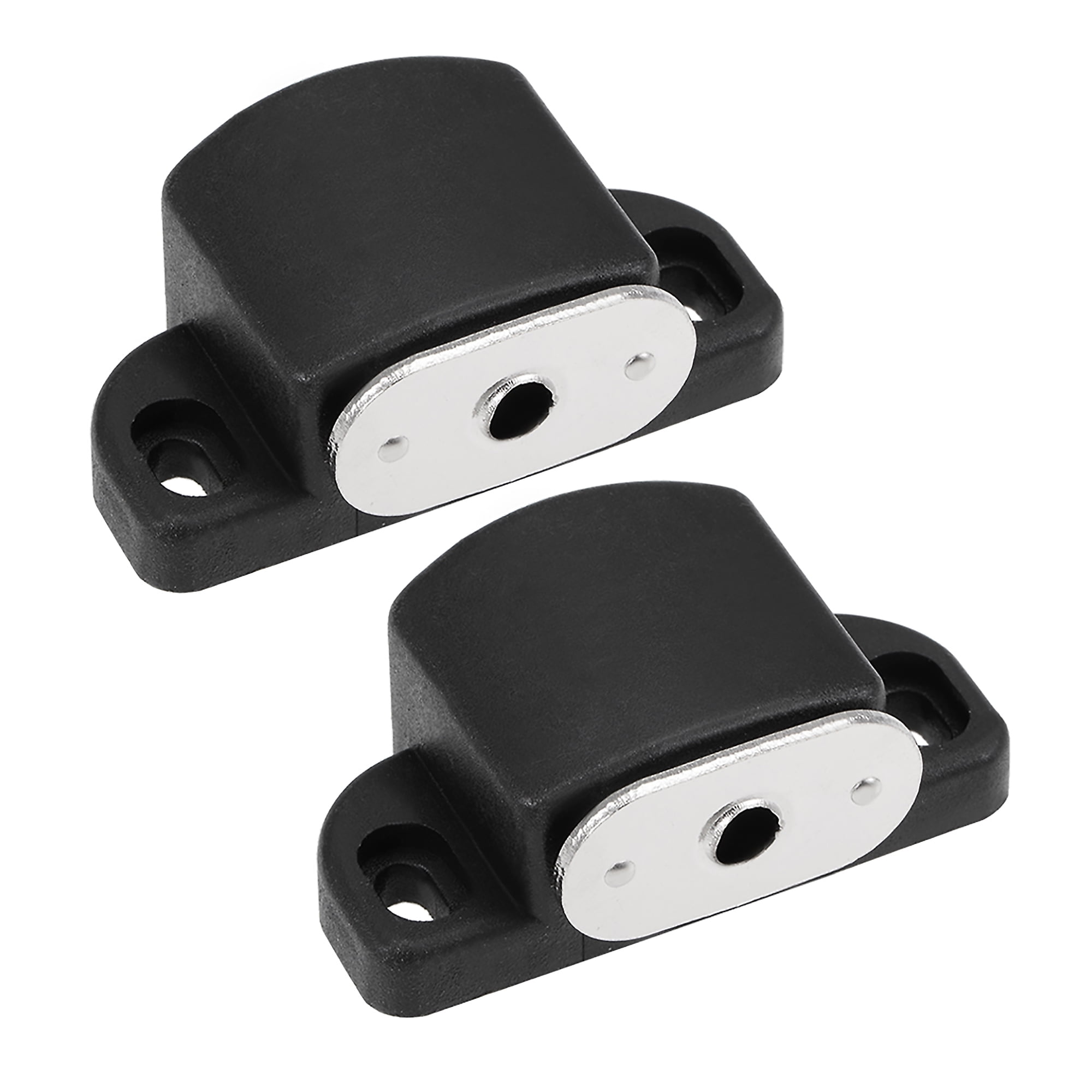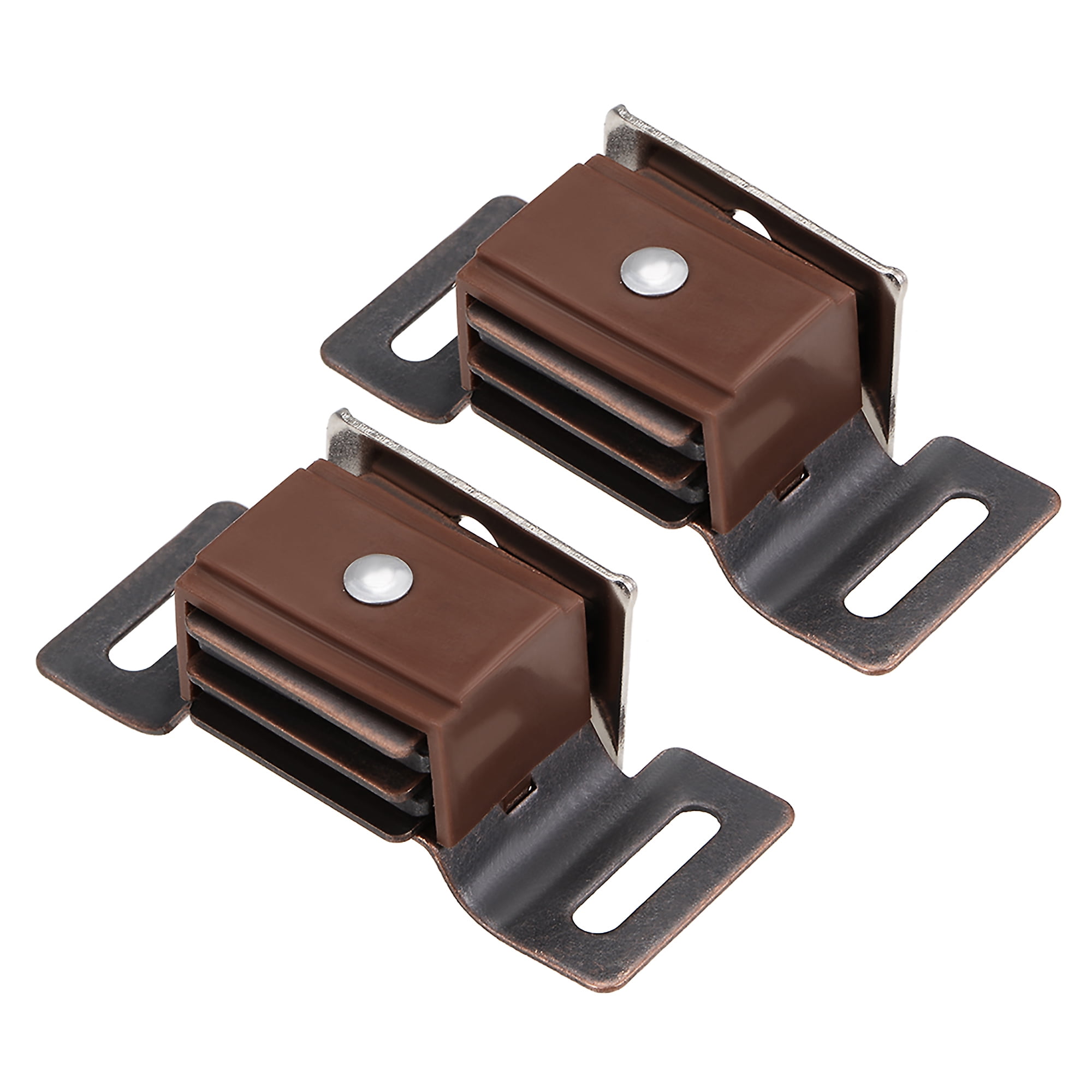Types and Applications of Cabinet Door Retainer Clips

Cabinet door retainer clips are unsung heroes of kitchen and bathroom design. These small, often overlooked components play a crucial role in ensuring the smooth operation and longevity of your cabinets. Understanding their various types and applications is key to selecting the right clip for your specific needs and achieving a professional-looking finish.
Cabinet Door Retainer Clip Types
Several types of cabinet door retainer clips are available, each with unique characteristics suited to different cabinet styles and materials. The choice depends on factors like door weight, cabinet material, and desired aesthetic.
| Material | Design | Application | Pros/Cons |
|---|---|---|---|
| Plastic | Simple clip-on design, often with a small lip or flange | Lightweight doors, face frame cabinets, inexpensive cabinets | Pros: Inexpensive, easy to install. Cons: Can break easily under stress, may not be suitable for heavy doors. |
| Metal (Steel, Zinc Alloy) | Various designs, including spring-loaded clips, screw-on clips, and concealed clips | Heavy doors, frameless cabinets, high-end cabinets | Pros: Durable, strong, suitable for heavy doors. Cons: More expensive, can be more difficult to install, may require specific tools. |
| Wood | Often integrated into the cabinet door or frame | Custom cabinetry, traditional styles | Pros: Aesthetically pleasing, matches wood cabinetry seamlessly. Cons: More expensive, requires woodworking skills for installation. |
| Self-Adhesive | Small, adhesive-backed clips | Lightweight doors, temporary installations, repairs | Pros: Easy installation, no tools required. Cons: Not suitable for heavy doors, adhesive may fail over time, limited strength. |
Applications of Cabinet Door Retainer Clips
The application of cabinet door retainer clips varies depending on the cabinet style and the type of clip used. Understanding these applications is crucial for selecting the right clip for your specific needs.
The following bullet points illustrate various applications of cabinet door retainer clips:
- Securing overlay doors on face frame cabinets: These clips hold the doors flush against the cabinet frame.
- Holding inset doors in place: Inset doors require clips that provide precise alignment and secure hold.
- Supporting heavy cabinet doors: Strong metal clips are necessary to support the weight of heavier doors without sagging or damage.
- Maintaining consistent door gaps: Properly installed clips ensure uniform gaps between adjacent doors and the cabinet frame for a clean, professional look.
- Repairing damaged or missing clips: Replacement clips restore functionality and maintain the aesthetic appeal of the cabinets.
Advantages and Disadvantages of Different Clip Types in Specific Scenarios
The choice of cabinet door retainer clip significantly impacts the functionality and aesthetics of the cabinets. For instance, using plastic clips on heavy doors will likely lead to breakage and instability, while using expensive wood clips on inexpensive cabinets might be wasteful.
Consider these examples:
- Heavy Doors in a Frameless Cabinet: Metal, spring-loaded clips offer superior strength and durability, preventing sagging and ensuring smooth door operation. Plastic clips would be inadequate in this scenario.
- Lightweight Doors in a Face Frame Cabinet: Inexpensive plastic clips are a cost-effective and easy-to-install solution. Their simplicity makes them ideal for quick installations.
- High-End Custom Cabinets: Concealed metal clips or integrated wood clips offer a clean, sophisticated look, complementing the overall design and minimizing visible hardware.
Installation and Repair of Cabinet Door Retainer Clips

Installing and repairing cabinet door retainer clips might seem daunting, but with the right approach and a little patience, it’s a manageable DIY project. This guide will walk you through the process, covering various clip types and troubleshooting common issues. Remember, safety first! Always disconnect power to any nearby electrical components before starting any work.
Installing Different Types of Cabinet Door Retainer Clips
Different cabinet door retainer clips utilize slightly different installation methods. Understanding these nuances ensures a smooth and successful installation. The following details common types and their installation procedures.
Let’s start with the most common type: the self-adhesive clip. These are typically simple to install. First, ensure the cabinet door is properly aligned within its frame. Then, peel off the protective backing from the adhesive strip on the clip. Firmly press the clip onto the designated location on the cabinet door, ensuring complete contact between the adhesive and the door’s surface. Hold it in place for several seconds to allow the adhesive to bond. You should see a solid, flush connection between the clip and the door. Finally, carefully align the door within the cabinet frame and ensure it latches securely.
Next, we have the screw-on clip. These require a bit more precision. Begin by pre-drilling pilot holes in the designated locations on the cabinet door to prevent the wood from splitting. This step is crucial for a clean installation. Then, align the clip and carefully insert the screws, tightening them gradually to avoid stripping the wood. Ensure the clip is securely fastened, but avoid over-tightening, which can damage the clip or the door. A properly installed screw-on clip will sit flush against the door, with the screws fully seated.
Finally, let’s consider clips that require insertion into pre-existing holes. These are often found in higher-end cabinets. Carefully inspect the cabinet door and frame to locate the pre-drilled holes designed for these clips. Simply insert the clip into the holes, ensuring it’s seated correctly. A correctly installed clip will be snug and stable within the holes, and the door should latch securely.
Troubleshooting Common Installation Problems
Even with careful attention, installation hiccups can occur. Misaligned doors are a common issue. If your door is misaligned after installing the clips, carefully remove the clips and re-evaluate the door’s position within the frame. You might need to adjust the hinges or the frame itself before reinstalling the clips. If the door is still misaligned after adjustments, consult a professional. Broken clips during installation often stem from forcing them into place. Always use the correct tools and techniques for your specific clip type. If a clip breaks, immediately replace it with an identical or compatible model.
Repairing or Replacing Damaged Cabinet Door Retainer Clips
Damaged or worn-out retainer clips can lead to loose or misaligned cabinet doors. Repairing or replacing them is usually straightforward. If the clip is merely loose, tightening screws (if applicable) may suffice. For broken clips, accurate replacement is crucial. Measure the dimensions of the old clip to ensure you select a compatible replacement. Remember to check the material and design to ensure it matches your existing clips. For example, a plastic clip shouldn’t be replaced with a metal one unless the design explicitly allows for such a swap. Before purchasing, compare the new clip to the old one, paying close attention to the dimensions, the attachment method, and the overall design. The replacement process mirrors the installation process for the specific clip type, as detailed above.
Selection and Sourcing of Cabinet Door Retainer Clips

Choosing the right cabinet door retainer clips can significantly impact the longevity and functionality of your cabinets. Factors like quality, price, and availability should be carefully considered to ensure a successful installation and prevent future issues. This section will guide you through the process of selecting and sourcing the perfect clips for your needs.
Comparison of Cabinet Door Retainer Clip Brands and Suppliers, Cabinet door retainer clips
Selecting the right brand and supplier depends on your priorities. Some prioritize quality above all else, while others focus on affordability. Availability is also a key factor, especially for specialized clips. The following table provides a comparison of several brands, based on my experience and research, offering a general overview. Note that prices and availability can fluctuate based on retailer and time of year.
| Brand | Price Range (USD) | Quality Rating | Availability |
|---|---|---|---|
| Brand A (Example) | $5 – $15 per pack | ★★★☆☆ | Widely available online and in home improvement stores. |
| Brand B (Example) | $10 – $25 per pack | ★★★★☆ | More readily available online; less common in smaller local stores. |
| Brand C (Example) | $20 – $40 per pack | ★★★★★ | Primarily available online from specialized suppliers. |
| Generic/Unbranded | $3 – $8 per pack | ★★☆☆☆ | Widely available online and in discount stores; quality can be inconsistent. |
Guide for Choosing Retainer Clips Based on Cabinet Door Types and Materials
The type of retainer clip needed depends heavily on the cabinet door’s weight, size, and material. Heavier doors, for instance, require stronger clips to ensure secure attachment. Similarly, the material of the door and the cabinet itself will influence the type of clip needed to ensure proper grip and avoid damage.
For lightweight doors made of materials like medium-density fiberboard (MDF), smaller clips with a simple design may suffice. However, heavier solid wood doors may require larger, more robust clips, potentially with enhanced gripping mechanisms. Always check the clip’s weight capacity before purchase to ensure compatibility. Consider using clips made of durable materials like metal or high-impact plastic for longer-lasting performance.
Resources for Purchasing Cabinet Door Retainer Clips
Several avenues exist for purchasing cabinet door retainer clips. Each offers different advantages and disadvantages.
Online Retailers:
Online retailers like Amazon, Home Depot, and Lowe’s offer a wide selection of clips from various brands, often at competitive prices. The convenience of online shopping is a significant advantage. However, shipping costs and potential delays should be considered. Also, carefully review customer reviews to gauge product quality and reliability before purchasing.
Local Hardware Stores:
Local hardware stores provide the benefit of immediate availability and the opportunity to examine products in person. However, selection might be limited compared to online retailers. In addition, pricing might be higher than online options. Consult with store staff for assistance if unsure which clip is appropriate for your needs.
Specialty Cabinet Suppliers:
For unique or high-end cabinet projects, specialty cabinet suppliers may offer specialized retainer clips designed for specific cabinet types or materials. These suppliers often provide expert advice on selecting the appropriate clips. However, expect to pay a premium for these specialized products.
